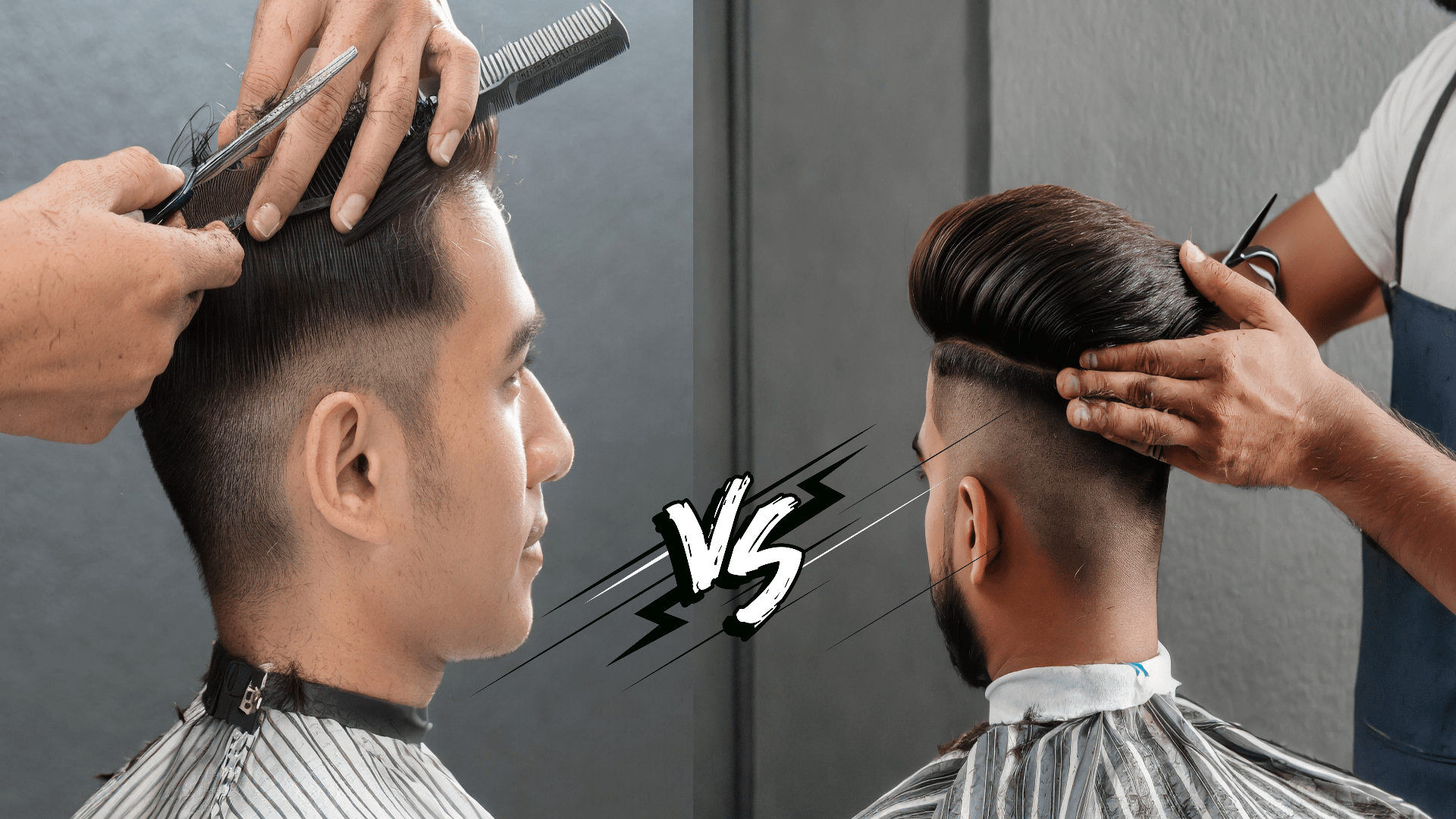Hey there! Are you thinking of getting a new haircut but can’t decide between a fade vs undercut? Don’t worry, we totally get it. Both of these haircuts are super popular among guys and can give you a seriously stylish look. But, each style has its own unique characteristics and variations. So, in this article, we’re going to break down the differences between a fade and an undercut. Plus, we’ll give you some tips on how to personalize each style to suit your preferences and features. Hope it helps!
Key Takeaways
- Fade and undercut are two popular men’s haircuts.
- Each hairstyle offers a unique look and has its own variations.
- The differences between a fade and an undercut include hair length, blending techniques, and overall aesthetic.
- Face shape plays a crucial role in choosing between a fade and an undercut.
- Proper maintenance and upkeep are necessary for both haircuts to maintain the desired look.
Understanding the Fade
Welcome to the section where we break down the fade hairstyle. In this section, we will define what a fade is, the different types of fade cuts, and how they are achieved. We will also discuss popular trends and variations within the fade hairstyle.
What is a Fade?
A fade is a hairstyle that gradually fades or tapers the hair from a relatively short length at the top, to an even shorter length at the sides and back of the head. It is achieved by using clippers and gradually reducing the length of the hair as it moves towards the nape of the neck.
Types of Fade Cuts
There are several variations of the fade haircut, these include:
| Fade Type | Description |
|---|---|
| High Fade | The high fade starts high up on the head and fades quickly towards the sides and back of the head. This style tends to give the head a more elongated look. |
| Low Fade | The low fade starts lower on the head and fades more gradually towards the sides and back. This style is ideal for those who want a more conservative look. |
| Skin (Bald) Fade | The skin fade is the most extreme of all fades, cutting the hair down to the skin. This style requires regular maintenance to maintain the desired look. |
Popular Trends and Variations
Now that you know what a fade is and the different types of fade cuts, let’s look at some popular trends and variations within this style:
- The undercut fade – combines the undercut style with a fade, creating a modern, edgy look.
- The temple fade – focuses the fade on the temples, creating a stronger contrast between the shorter and longer hairs.
- The curly fade – for those with curly hair, a fade can be combined with curls to create a unique and stylish look.
Tip: Remember to communicate with your stylist to find the best variation of the fade that suits your personal style and facial features.
Now that you know the basics of the fade hairstyle, let’s move on to the next section where we will discuss the undercut hairstyle in detail.
Unraveling the Undercut
In this section, we will dive into the undercut hairstyle, which is often compared to the fade. However, they are distinct styles with unique characteristics. Here, we will define the undercut and explore its various variations.
The undercut involves cutting the hair short on the sides and back, while leaving the top longer. This creates a bold and edgy look, with a stark contrast between the top and lower sections of hair. Unlike fades, undercuts typically have a more gradual transition between the lengths, resulting in a sharper distinction between the two sections.
Undercuts can be styled in a variety of ways, from sleek and slicked-back to tousled and textured. One popular variation is the disconnected undercut, which features a more dramatic contrast between the top and bottom sections, with the hair on top disconnected from the sides and back. Another variation is the textured undercut, which involves adding layers and texture to the top section for a more relaxed and tousled appearance.
| Pros of an Undercut | Cons of an Undercut |
|---|---|
| Easy to maintainOffers a bold and edgy lookVersatile and can be styled in various waysIdeal for those with thick or wavy hair | Requires regular maintenance to keep the look freshMay not be suitable for conservative or formal environmentsCan be difficult to grow out |
When deciding between a fade and an undercut, it’s essential to consider personal style and preferences. If you’re looking for a bold and edgy style that’s easy to maintain, an undercut might be the right choice for you. However, it’s important to consider the potential drawbacks, such as the need for regular maintenance and limited suitability for certain settings.
Key Differences between the Fade and Undercut
When it comes to choosing between a fade and an undercut, it’s important to understand the key differences between the two styles. While both hairstyles involve shorter sides and longer hair on top, there are notable variations in terms of hair length, blending techniques, and overall aesthetic.
Length: One of the main differences between fades and undercuts is the length of hair on the sides. Fades gradually taper down from longer hair on top to very short hair on the sides and back of the head. Undercuts, on the other hand, have a more distinct contrast between longer hair on top and short, buzzed hair on the sides and back.
Blending Techniques: The blending technique used in fades creates a smooth and seamless transition from long to short hair. Barbers achieve this effect by gradually cutting the hair shorter using clippers or scissors. Undercuts, on the other hand, require a more defined line between the long hair on top and the short hair on the sides and back.
Aesthetic: The overall aesthetic of fades and undercuts can also differ. Fades tend to have a more classic and refined look, while undercuts can give off a more edgy and contemporary vibe. Of course, this ultimately depends on the specific variation and styling of the haircut.
Fade Cut vs Undercut: What’s the Difference?
While both haircuts have short sides and longer hair on top, the main difference between a fade and undercut lies in the blending technique. Fades uses a gradual blending technique to create a seamless transition from longer hair on top to shorter hair on the sides and back. Undercuts, on the other hand, have a more distinct contrast between longer hair on top and shorter, buzzed hair on the sides and back. Additionally, undercuts often feature more dramatic length differences between the top and sides compared to fades.
Fade vs Undercut vs Taper: Understanding the Variations
While fade and undercut hairstyles are distinct in their differences, there are also variations of each style that can blur the lines. For example, a taper fade combines the gradual blending of a fade with a shorter length on the sides similar to an undercut. Similarly, a disconnected undercut features a more noticeable separation between the top and sides. Understanding these variations can help you communicate your desired style to your barber or stylist.
Face Shape Considerations
When choosing between a fade and an undercut, it’s important to consider your face shape. Certain styles may complement your features better than others. Here are some tips to keep in mind:
- Round faces: A high fade can help elongate the face, while an undercut with length on top can provide balance.
- Square faces: A low fade with a textured top can soften angular features, while an undercut with volume on top can give the illusion of length.
- Oval faces: Lucky for those with oval faces, both fades and undercuts can be flattering. Experiment with different variations to see what you prefer.
- Heart-shaped faces: An undercut with volume on top can balance out a narrower chin, while a fade with a longer top can soften the forehead.
Remember, these are just guidelines and it’s ultimately up to personal preference. Consult with a stylist to determine the best style for you.
Styling Tips and Inspiration for Fades
If you’re considering a fade, there are a variety of options to choose from. Here are some popular fade variations:
| Fade Type | Description |
|---|---|
| High Fade | This fade begins near the top of the head and gradually fades down to the skin. It’s a great choice for guys who want a more dramatic look. |
| Low Fade | The low fade starts closer to the ears and neck, and gently fades down to the skin. It’s a subtle, classic look that’s easy to maintain. |
| Skin Fade | The skin fade is the most dramatic of all fades, with the hair disappearing completely at the sides and back. It’s a bold look that’s sure to turn heads. |
Once you’ve chosen your fade type, it’s important to know how to style it. Here are some tips:
- Consider your hair texture – if you have thick hair, you may want to leave more length on top to balance out the fade. If you have fine hair, a shorter cut will help to create the illusion of thickness.
- Use the right products – a good quality pomade or wax can help to add texture and hold to your hair, while a hairspray can be used to set the style in place.
- Experiment with different styles – fads come and go, so why not try out different variations of your fade to see which one works best for you? You can add a parting, slick it back, or even add some color.
Remember, getting a fade is a personal choice, so don’t be afraid to experiment and have some fun with it!
Styling Tips and Inspiration for Undercuts
If you’ve decided that an undercut is the way to go, you might be wondering how to style it. Don’t worry – there are plenty of options to choose from. Here are some ideas to get you started:
The Classic Undercut
The classic undercut involves leaving the hair on top longer while shaving the sides and back. This style can be worn in a variety of ways – slicked back, messy, or even with a side part. To achieve the classic undercut, ask your stylist to use clippers on the lower half of your head while leaving the top longer. Then, use a styling product to create your desired look.
The Textured Undercut
This style involves cutting the hair on top to different lengths and adding texture for a messy, undone look. The sides and back are still shaved, but the top is styled in a way that creates a textured appearance. To achieve this style, ask your stylist to use scissors to cut the top section of your hair to varying lengths. Then, use a styling product to add texture and create your desired look.
| Classic Undercut | Textured Undercut |
|---|---|
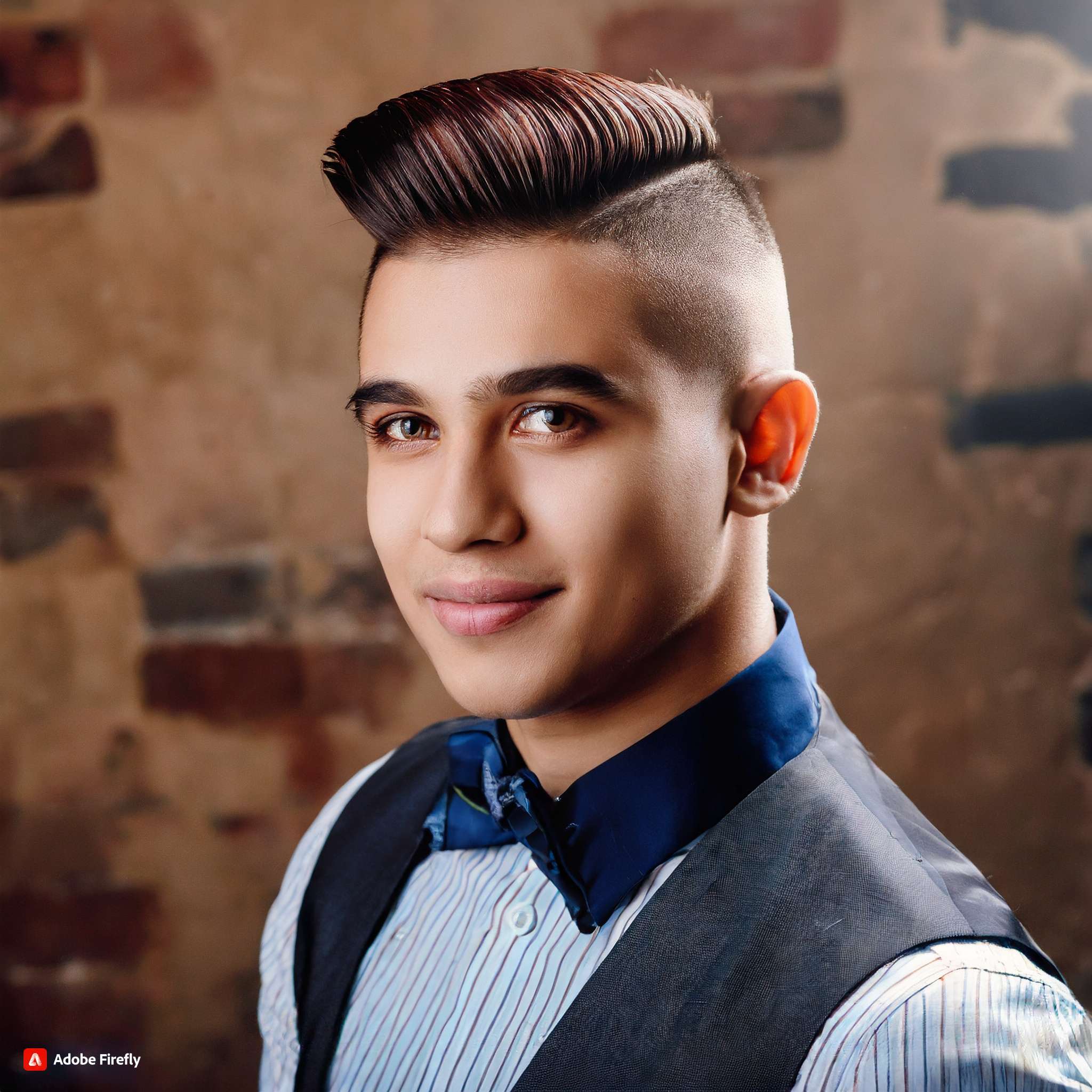 | 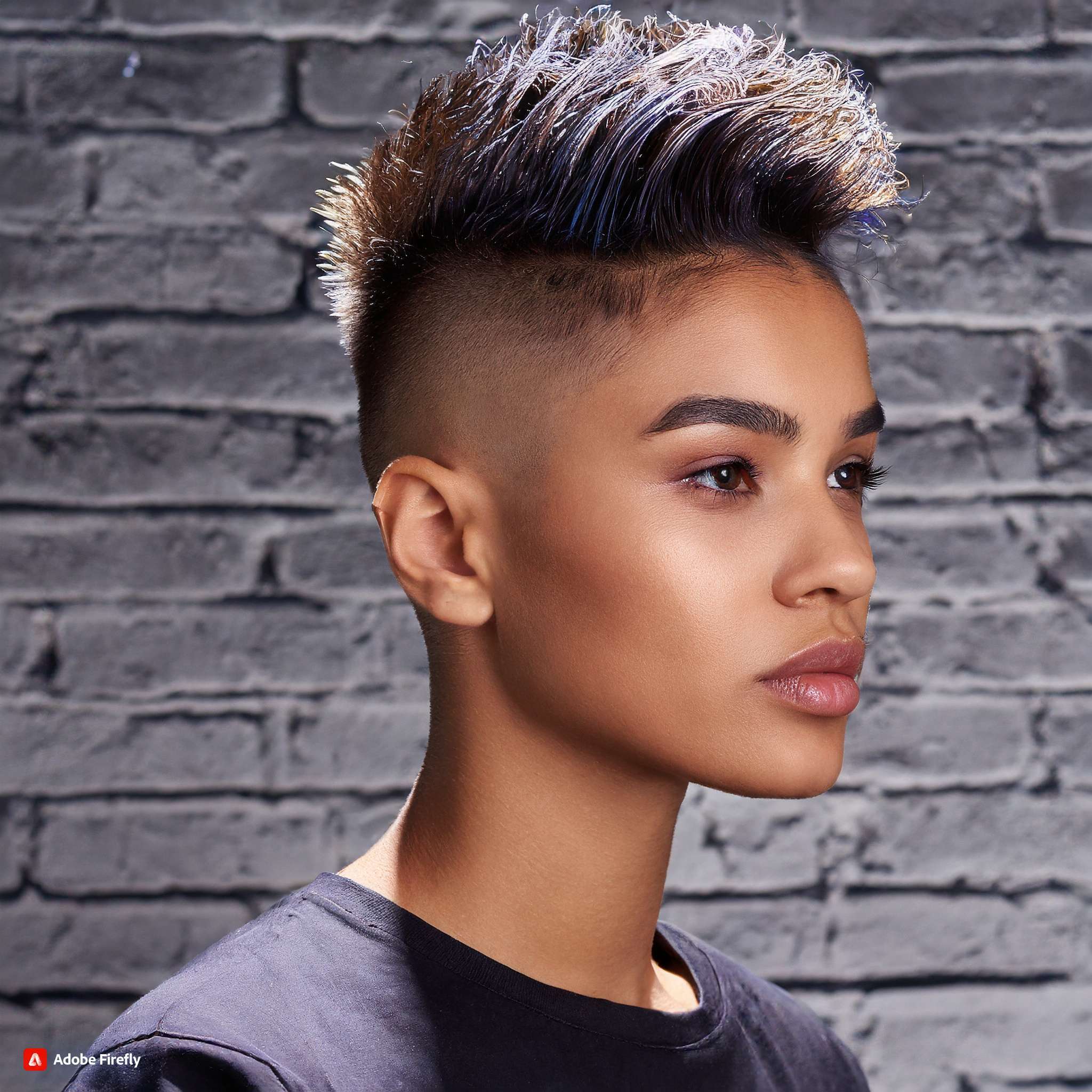 |
The Side-Swept Undercut
This style involves sweeping the hair to one side while keeping the sides and back short. It can be worn with a side part or simply swept to one side. To achieve this look, ask your stylist to cut the sides and back short while leaving the hair on top long enough to sweep to one side. Use a styling product to create your desired look.
The Disconnected Undercut
This style involves creating a sharp contrast between the longer hair on top and the shaved sides and back. The longer hair is disconnected from the shorter hair, creating a bold, edgy look. To achieve this style, ask your stylist to use clippers to shave the sides and back while leaving the top longer. The top section should be disconnected from the rest of the hair. Use a styling product to create your desired look.
| Side-Swept Undercut | Disconnected Undercut |
|---|---|
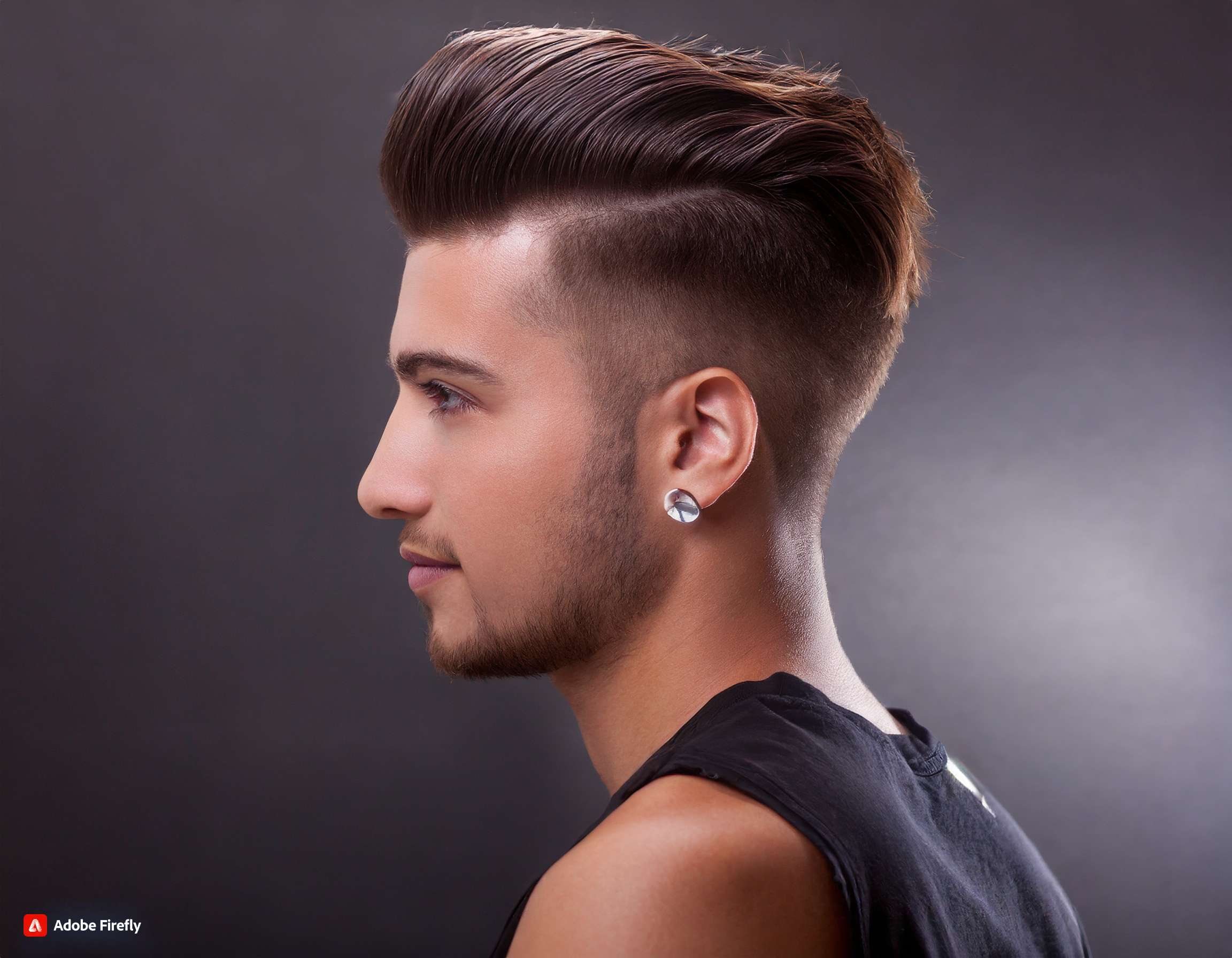 | 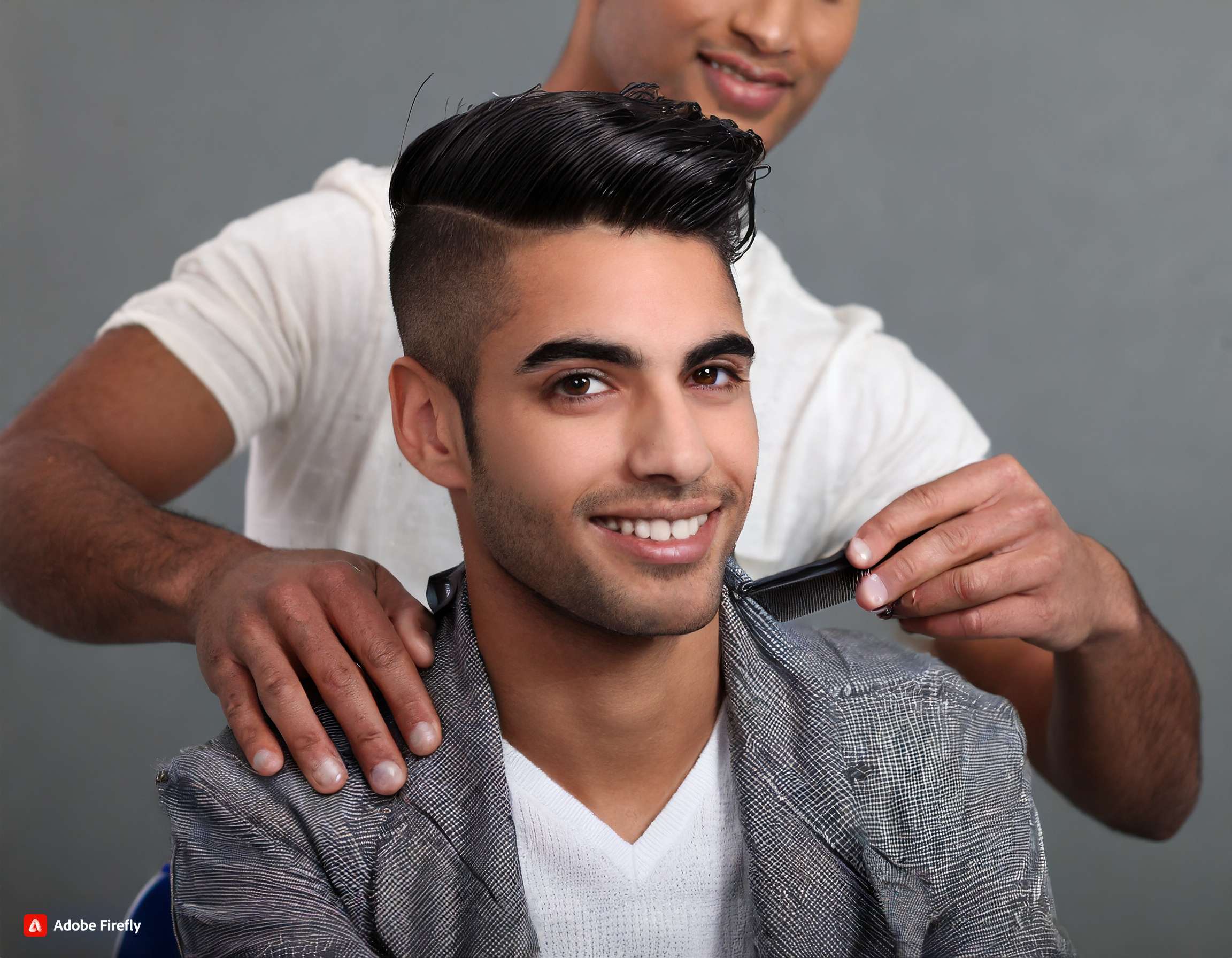 |
Remember, these are just a few ideas to get you started. Feel free to experiment and find the undercut style that suits you best.
Styling Tips:
- Use a high-quality styling product, such as a pomade or wax, to create your desired look and hold your hair in place.
- Experiment with different hair lengths and textures to find the style that works best for you.
- Visit your stylist regularly to maintain the desired length and shape of your undercut.
Maintenance and Upkeep
Keeping up with the maintenance of a fade or an undercut is essential to maintain the desired look.
For fades, regular trimming is necessary to remove any overgrown hair and maintain the desired length. The frequency of trims will depend on the individual’s hairstyle and hair growth rate; on average, a trim every two to four weeks is recommended to keep the fade looking fresh.
When it comes to undercuts, the frequency of trims will depend on the individual’s desired length and style. Those with longer undercuts may be able to go longer between trims, while those with shorter undercuts will need to trim more frequently to maintain the shape and style.
Product Recommendations
Using the right hair products can also make a significant difference in maintaining the look and feel of a fade or an undercut.
For fades and undercuts alike, a high-quality pomade or hair wax can be beneficial in keeping the hair in place and adding texture and definition to the style. However, it’s important not to use too much product, as this can weigh down the hair and make it appear greasy.
Avoid using products containing harsh chemicals, such as sulfates and alcohol, as these can be drying and damaging to the hair. Look for natural and nourishing ingredients such as argan oil, coconut oil, and shea butter, which can help to keep hair healthy and hydrated.
Styling for Fades and Undercuts
To style your fade or undercut, start with clean, damp hair. Apply a small amount of product to your hands and work it through your hair, focusing on the ends and any areas that need extra hold. Use a comb or your fingers to style the hair as desired, taking care to create the shape and texture you want.
For fades, consider experimenting with different variations, such as the high fade, low fade, or skin fade. These variations can offer a unique and personalized take on the classic fade style.
Undercuts can also be styled in various ways, such as the disconnected undercut, the textured undercut, or the undercut with a hard part. These variations can add dimension and depth to the style, making it stand out.
Tapering
Tapering is an important aspect of both fades and undercuts. It involves blending the hair from shorter to longer lengths, creating a gradual and natural-looking transition.
When tapering a fade, it’s important to use the right techniques to achieve a smooth and seamless blend. This may involve using different clipper guards or techniques to fade the hair gradually.
When tapering an undercut, the focus is on blending the hair on the sides and back of the head with the longer hair on top, creating a cohesive and polished look.
Final Thoughts
Maintaining a fade or an undercut requires regular upkeep and the right hair products. With the right tools and techniques, anyone can achieve a stylish and trendy look. Remember to consult with a professional hairstylist for personalized advice and recommendations on what products and techniques will work best for your hair type and style.
Choosing the Right Style for You
Deciding between a fade vs undercut can be a tough call. Both styles have their unique appeal and variations. When choosing the right style for you, it’s important to consider various personal factors, including hair texture, desired level of maintenance, and lifestyle. Here are some tips to help you make the right decision.
Consider your hair texture. Fades and undercuts both work well with most hair types, but certain variations may suit your texture better. For instance, if you have curly hair, a taper fade may be a better option than a skin fade, which can accentuate the curls in unwanted ways. On the other hand, an undercut with a disconnected top can work wonders for those with straight or wavy hair, adding texture and dimension.
Think about maintenance. While both fades and undercuts require regular upkeep, the maintenance required for each style can vary. Fades typically require more frequent trips to the salon for touch-ups, while undercuts can be left to grow out a bit more before needing a trim. Keep in mind that your daily routine may also influence your decision. If you prefer low-maintenance hairstyles, an undercut may be a better fit.
Consider your face shape. Your face shape can play an important role in determining which style is best for you. For instance, if you have a round face, a fade can help elongate your features, while an undercut that’s too short or too long can make your face appear wider. If you have a square face, an undercut with a swept-back top can soften your features and add some dimension.
| Face Shape | Recommended Style | Avoid |
|---|---|---|
| Round | Fade | Undercut that’s too short or long |
| Square | Undercut with a swept-back top | Undercut with a slicked-back top |
| Oval | Both styles work well | N/A |
| Heart-shaped | Fade with a longer top | Undercut with a disconnected top |
Consider your lifestyle. Your lifestyle should also play a role in choosing your hairstyle. If you have a corporate job that requires a more polished look, a fade with a longer top can be a great option. On the other hand, if you’re a student or have a more creative job, an undercut with a textured top can help you stand out.
Ultimately, the decision between a fade and an undercut comes down to personal preference. By considering different factors such as hair texture, maintenance, face shape, and lifestyle, you can make an informed decision that suits your needs and style.
Conclusion
After exploring the differences between fade and undercut hairstyles, we hope you have gained a better understanding of each style and how they can best suit your personal preferences and lifestyle. By considering factors such as face shape, hair texture, and desired level of maintenance, you can make an informed decision when choosing between a fade and an undercut.
It’s important to remember that while both styles have their unique characteristics, they can also be tailored to suit different personal styles and features. Consult with a professional hairstylist for personalized advice and recommendations.
Whether you choose a fade or an undercut, both styles offer versatility and can be styled in a variety of ways. Play around with different variations, such as the skin fade, textured undercut, or disconnected undercut, to find the look that best suits you.
Overall, fade vs undercut should not be seen as a competition, but rather two styles that can be tailored to suit your unique style and personality. So go ahead, experiment, and have fun with your new hairstyle!
FAQ
What is the difference between a fade and an undercut?
A fade involves gradually tapering the hair on the sides and back, while an undercut involves shaving or trimming the hair short on the sides and back.
How do I choose between a fade and an undercut?
The choice between a fade and an undercut depends on personal style, hair texture, and desired maintenance level. It is recommended to consult with a professional hairstylist for personalized advice.
Can I style a fade or an undercut in different ways?
Yes, both fade and undercut hairstyles offer various styling options. Fades can be styled with different lengths on top, while undercuts can be styled with different lengths, textures, and partings.
How do I maintain a fade or an undercut?
Maintaining a fade or an undercut requires regular trimming to maintain the desired shape. It is also important to use appropriate hair products and follow a proper hair care routine.
What face shapes work well with fades and undercuts?
Fades and undercuts can suit various face shapes. However, the specific style and length should be chosen based on individual features. For example, fades can help elongate round faces, while undercuts can add structure to square faces.
Can I transition from a fade to an undercut or vice versa?
Yes, it is possible to transition from a fade to an undercut or vice versa. However, it is advisable to consult with a professional hairstylist to ensure a smooth and desired transition.
Are fades and undercuts suitable for all hair types?
Fades and undercuts can be adapted to suit different hair types, including straight, wavy, and curly hair. It is important to consider individual hair texture and consult with a hairstylist for personalized recommendations.
How long does it take to grow out a fade or an undercut?
The time it takes to grow out a fade or an undercut depends on the desired length and individual hair growth rate. On average, it may take a few weeks to a couple of months to fully grow out.
Can I get a fade or an undercut with longer hair?
Fades and undercuts can be achieved with longer hair, although the length and styling options may be limited. It is best to consult with a hairstylist to determine the best approach for your desired look.
Where can I find inspiration for fade and undercut styles?
Online resources, such as hairstyle blogs, social media platforms, and hairstylist websites, can provide inspiration for fade and undercut styles. Additionally, consulting with a professional hairstylist can help you find a style that suits your personal preferences and features.
